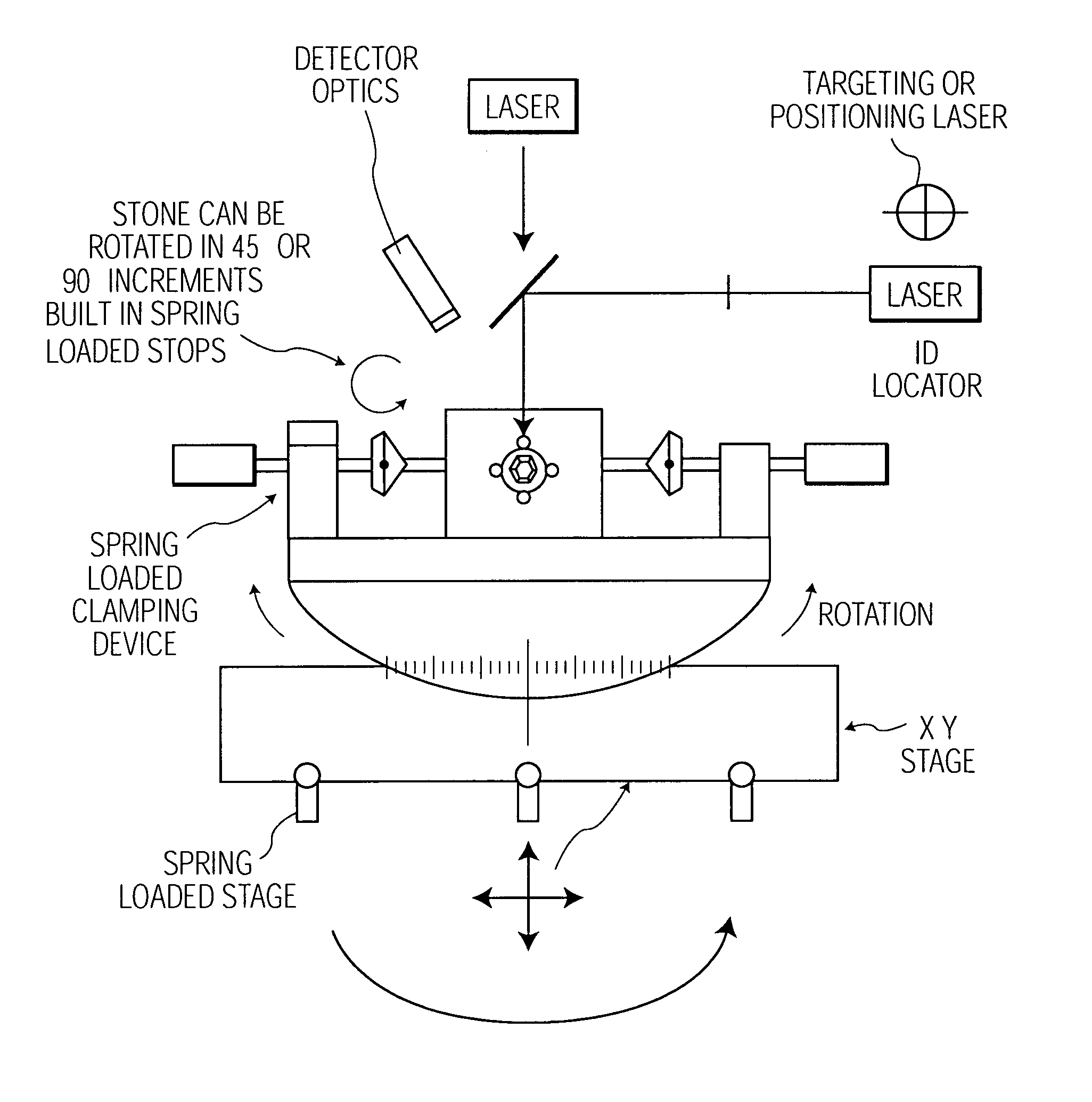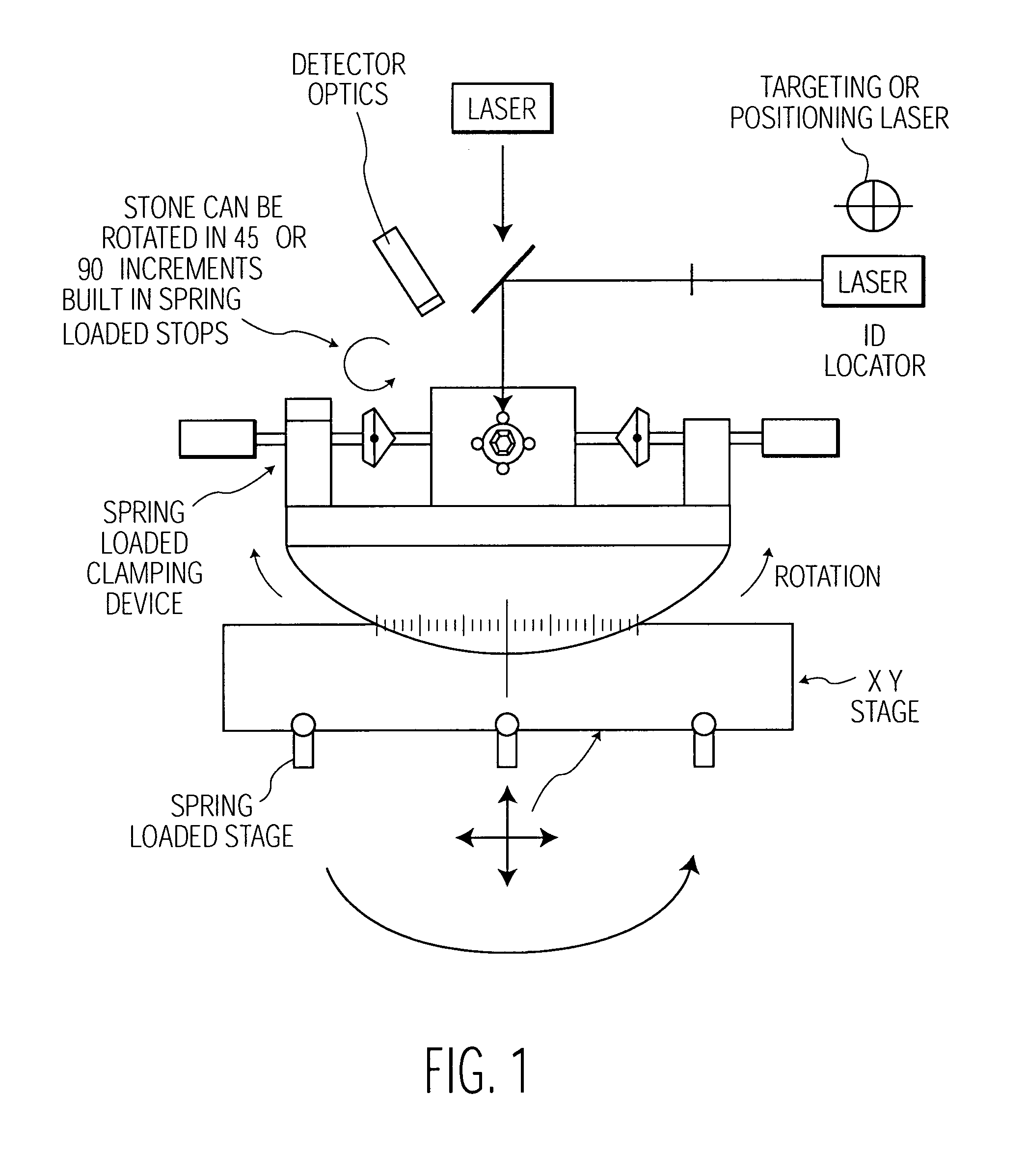System and method for analysis of gemstones
a gemstone and chemical analysis technology, applied in the field of systems and methods for chemical analysis of gemstones, can solve the problems of low parts per, inability to conduct field experiments, large laboratory equipment used, etc., and achieve the effects of reducing hardware costs, reducing detection limits, and rapid analysis cycles
- Summary
- Abstract
- Description
- Claims
- Application Information
AI Technical Summary
Benefits of technology
Problems solved by technology
Method used
Image
Examples
Embodiment Construction
[0093]The system may employ a semi-automated sampling device for positioning material in the laser beam at optimum signal angle, as shown in FIG. 1.
[0094]“Sticky tack” may also be used as a medium to hold samples in place. Gem sizes down to approximately 2 mm have been effectively analyzed using LA-ICP / OES-AES. LIBS might also be applied to analyze stones of about 2 mm. Accordingly, a small container may be filled with sticky tack, mounted on an XYZ stage with radius tilting capability. The stage is adjusted for position and angle with respect to the laser.
[0095]However, the sample holder and analysis chamber shown in FIG. 1 is a more mechanically controlled environment. Ideally, the ablating laser is directed to hit the target at approximately 90 degrees, producing an ideal, flat bottomed, ablated crater, rather than a conical shape or distorted depression. Grazing angles can potentially deflect the beam from the target area and yield erroneous results.
[0096]A positioning or target...
PUM
 Login to View More
Login to View More Abstract
Description
Claims
Application Information
 Login to View More
Login to View More - R&D
- Intellectual Property
- Life Sciences
- Materials
- Tech Scout
- Unparalleled Data Quality
- Higher Quality Content
- 60% Fewer Hallucinations
Browse by: Latest US Patents, China's latest patents, Technical Efficacy Thesaurus, Application Domain, Technology Topic, Popular Technical Reports.
© 2025 PatSnap. All rights reserved.Legal|Privacy policy|Modern Slavery Act Transparency Statement|Sitemap|About US| Contact US: help@patsnap.com


